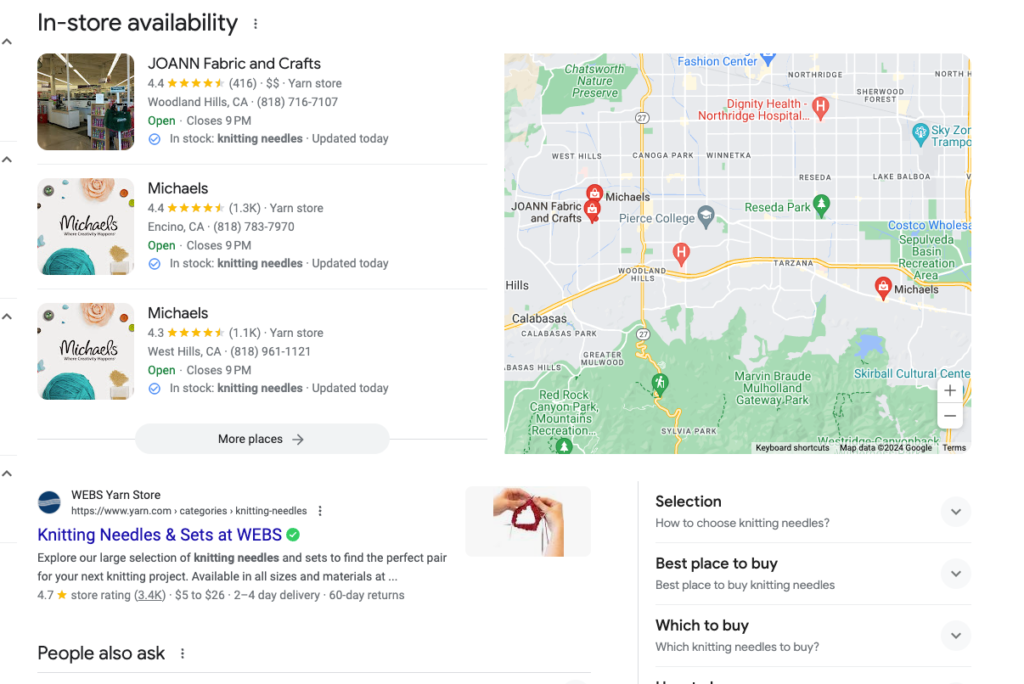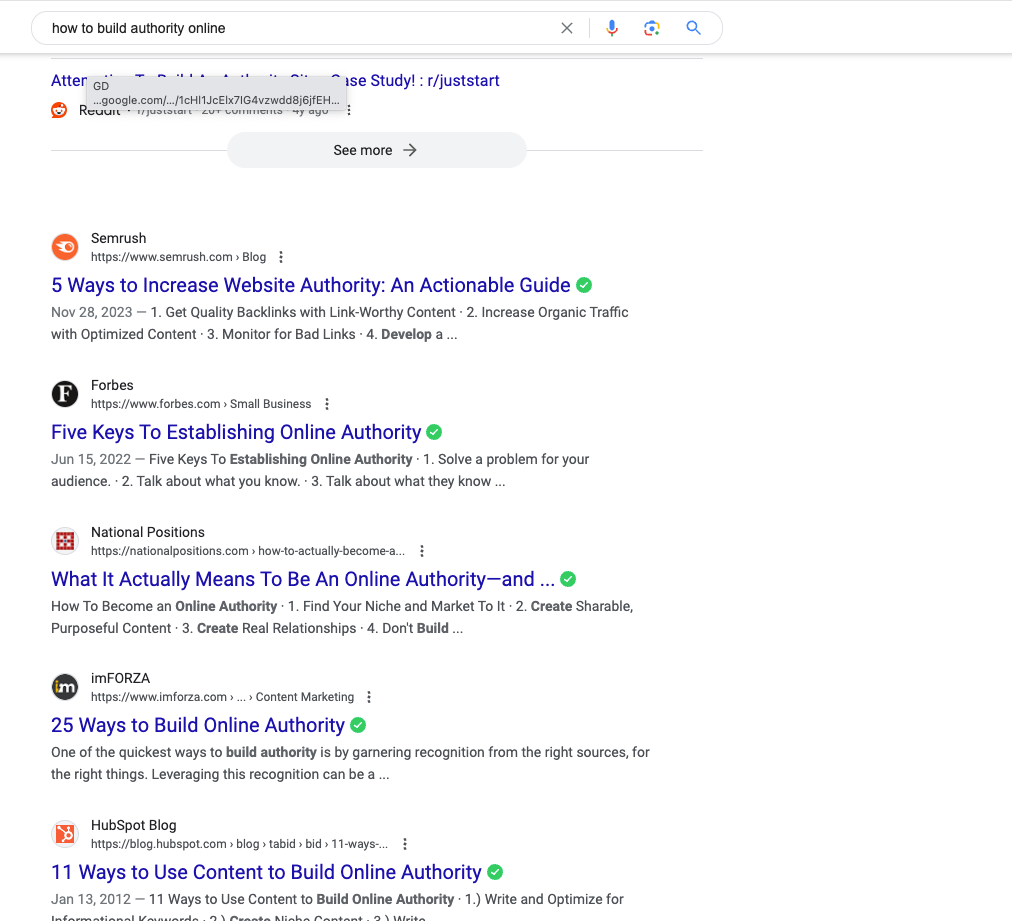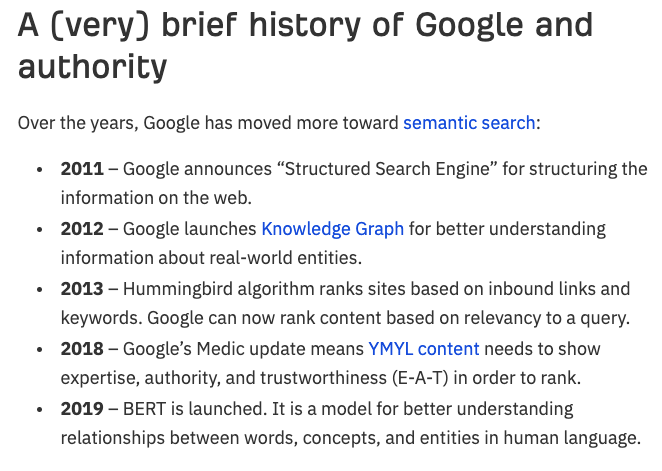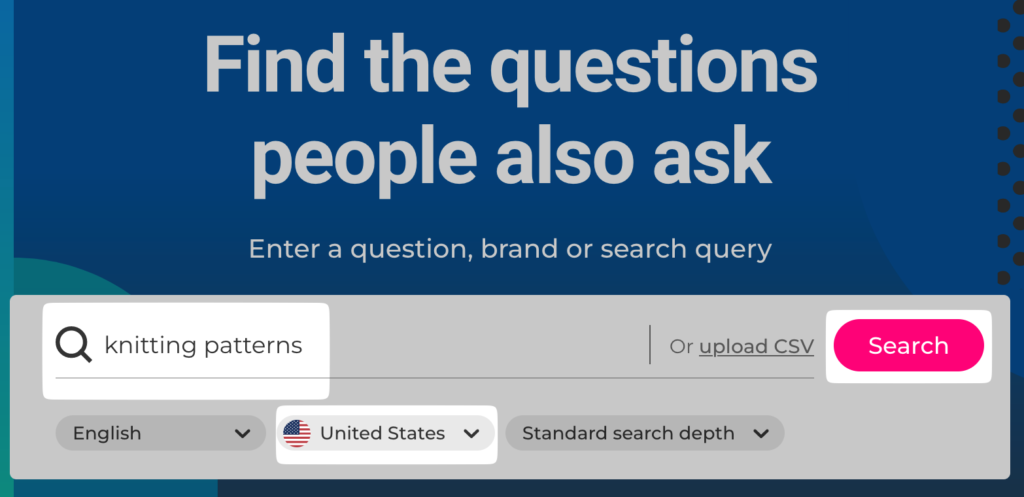Benefits of AI Marketing

Integrating AI into marketing approaches presents numerous benefits that enhance marketing efforts’ efficiency and success rate.
-
-
- Swift analysis of vast datasets
- Delivery of timely, actionable insights
- Improvement in media selection processes
- Knowledge-based decisions regarding Market strategies.
-
Machine learning is significant in rapid pivots based on campaign data and customer behavior. These benefits underscore why AI-powered tools are considered invaluable to marketers.
AI-infused marketing instruments can revolutionize a marketer’s strategy through:
-
-
- Mining valuable insights out of databases with complex information
- Timely capitalization on these discoveries
- Fostering stronger bonds with customers via tailored communications
- Pinpointing customers who may be losing interest and reaching out to them with materials aimed at re-engagement
-
When explicitly applied to social media endeavors, intelligence gleaned from AI can drastically improve the performance outcomes associated with social media content. These advancements enable companies to adopt an anticipatory stance toward enhancing customer interaction, devotion, and retention rates.
Enhanced Customer Personalization
The standout advantages of integrating AI into marketing lie in the substantial improvement it brings to customer personalization. By utilizing machine learning algorithms, businesses can offer dynamic content recommendations that adapt according to user behavior. Tools powered by AI meticulously parse through data from customer interactions, constantly refining and shaping upcoming marketing strategies to ensure individuals receive messages that resonate deeply with their specific interests. This heightened degree of customization not only augments engagement but also amplifies customer satisfaction, thereby laying a solid foundation for robust customer relationships.
Virtual assistants enhanced by artificial intelligence are instrumental in furthering this personalized experience as they:
-
-
- Interpret customer data to effectively schedule meetings
- Recommend additional products or higher-tier services (cross-selling and upselling)
- Provide apt product suggestions and tailor-made content
-
Through these functions, AI-driven marketing significantly boosts the overall quality of the customer journey, leading to greater levels of active participation. Embracing such a tailored strategy not only elevates client happiness, but equally paves the way for recurrent business transactions and fortifies brand allegiance.
By applying smart analytics tools driven by machine learning algorithms on collected consumer information, businesses continuously refine their advertising endeavors, which will enable every single client to be catered with an incredibly pertinent advert designed around his or her liking improves upon satisfaction among consumers while nurturing even more vital connections between them.
Improved Campaign ROI
By utilizing machine learning algorithms, businesses can offer dynamic content recommendations that adapt to user behavior. AI-powered tools meticulously parse through customer interaction data, constantly refining and shaping upcoming marketing strategies to ensure individuals receive messages that resonate deeply with their specific interests. This heightened degree of customization augments engagement and amplifies customer satisfaction, laying a solid foundation for robust customer relationships.
Virtual assistants enhanced by artificial intelligence are instrumental in furthering this personalized experience as they:
-
-
- Interpret customer data to schedule meetings effectively
- Recommend additional products or higher-tier services (cross-selling and upselling)
- Provide apt product suggestions and tailor-made content
-
Through these functions, AI-driven marketing significantly boosts the overall quality of the customer journey, leading to greater levels of active participation. Embracing such a tailored strategy elevates client happiness, paving the way for recurrent business transactions and fortifying brand allegiance.
Businesses continuously refine their advertising endeavors by applying intelligent analytics tools driven by machine learning algorithms to collect consumer information. This enables every single client to be catered to with an incredibly pertinent advert designed around their liking, improving satisfaction among consumers while nurturing even more vital connections between them.
Faster Decision Making
A significant benefit of AI marketing is the ability to make real-time data-driven decisions that enhance marketing effectiveness. AI tools offer real-time performance metrics, allowing marketers to pivot strategies swiftly. This decision-making capability will enable businesses to respond rapidly to customer needs and market fluctuations.
The speed and accuracy of the processing also help smaller businesses compete with larger organizations. By expediting the research process and providing actionable insights, AI allows marketers to make informed decisions faster. This agility in decision-making ensures that marketing strategies are always relevant and practical, driving better business outcomes.
Challenges in AI Marketing Implementation

Implementing AI in marketing can offer advantages, yet it poses certain hurdles, such as guaranteeing the integrity and seamless integration of data, navigating privacy and ethical dilemmas, and acquiring the backing of stakeholders. For precise insights and decision-making powered by AI to occur, an untainted source of high-quality data is imperative. Preserving this standard presents difficulties. Marketers want to enhance their investment in cleaning, validating, and assimilating processes to tackle these issues surrounding data quality.
Privacy and ethics weigh heavily on approaches toward AI in marketing strategies, affecting modes businesses use to gather consumer information for analysis or utilization. Essential aspects include:
-
-
- Adhering strictly to laws like GDPR
- Keeping transparent records concerning how user data is employed
- Getting explicit permissions from users
- Defending confidential consumer details
- Decreasing likelihoods associated with unauthorized access or exposure
-
Earn public confidence while ensuring customer’s private information remains secure requires strict adherence to these practices.
The challenge is securing agreement from those involved, mainly because specialized skills related to both digital science applications (like artificial intelligence) may be required. To integrate AI effectively within a company’s framework—particularly within its various teams focused on market-related activities—it is crucial to highlight potential benefits deriving from investments made towards innovative technology and champion acceptance across all quarters within the organizational hierarchy.
Data Quality and Integration
Data integrity and proper amalgamation are essential for AI tools to provide precise insights for informed decision-making. Marketing strategies must be based on high-quality data to reflect consumer preferences accurately. Flawed or prejudiced information can result in ineffective marketing approaches, underscoring the necessity of enhancing data sources and upholding their authenticity. Marketers must commit resources to purifying, verifying, and fusing their datasets so that AI applications can deliver sound judgments.
Integrating disparate streams of data presents its own set of challenges. Marketers must ascertain that their AI instruments can adeptly merge inputs from diverse origins, offering an integrated perspective on customer behavior. When these obstacles are overcome effectively, companies stand poised to tap into the vast promise provided by AI in marketing endeavors—gleaning highly accurate and actionable insights grounded in a robust compilation of data points.
Privacy and Ethical Concerns
In the ethical application of AI within marketing endeavors, safeguarding privacy and adhering to ethical norms take precedence. Companies must manage consumer information carefully and abide by legal frameworks such as GDPR, which helps preserve trust and averts risks, including data violations, illicit entry, and identity fraud. In the realm of marketing via artificial intelligence, essential moral issues include:
-
-
- Safeguarding data confidentiality.
- Correcting biases in algorithms.
- Striking an appropriate balance between individualized service offerings and respecting user privacy.
-
For businesses to confront these challenges effectively, they must:
-
-
- Promote transparency regarding how they utilize customer data.
- Enforce stringent security protocols.
- Develop moral codes that address potential prejudice in algorithms while promoting equity within AI-infused marketing initiatives.
-
When companies prioritize privacy concerns and ethical practices in their operations, they establish stronger bonds of confidence with patrons. Consequently, this allows them to optimize their promotional activities by integrating artificial intelligence technologies.
Gaining Stakeholder Buy-In
Securing approval from stakeholders for investments in AI-driven marketing can be challenging, as it may require an understanding of AI and data. Due to their complex nature, marketing teams frequently find adopting these advanced programs daunting. Marketers must convey AI’s benefits by highlighting enhancements in customer experience, strengthening brand reputation, and improving campaign outcomes.
Approaches that could persuade stakeholders might include:
-
-
- Creating highly detailed market segmentation,
- Executing automated workflows tailored to different segments,
- Crafting personalized messaging that empowers salespeople to gauge a potential buyer’s interest level and predict deal closure probability
- Clear communication regarding AI’s advantages,
- Including stakeholder participation throughout the deployment stages of AI tools,
-
By effectively implementing these approaches, marketing professionals can cultivate an environment with collective support for incorporating artificial intelligence into marketing initiatives.
Real-World Examples of AI in Marketing
Various enterprises are tapping into the power of AI to bolster their marketing approaches, showcasing the tangible advantages that AI marketing tools offer. Starbucks utilizes its Deep Brew AI system to craft tailored outreach informed by customer behavior patterns, which has resulted in an uptick in rewards program memberships. Meanwhile, Nestle employs Cortex, an AI tool designed to maintain brand consistency across social media channels by rating creative materials against established branding guidelines. These instances underscore how effective personalization and uniformity promoted through AI can magnify engagement within marketing initiatives.
Brands like Nike and BMW have leveraged artificial intelligence technology for promotional campaigns. In a nod to Serena Williams’ illustrious career trajectory, Nike deployed generative videos depicting hypothetical matchups between various incarnations of the tennis icon using powerful predictive algorithms in time-honored tribute fashion with video generation software and analysis algorithms provided by top-tier services like IBM Watson. On another front – melding artistry with automotive prowess – BMW embraced generative AI when they unleashed virtual imagery for The 8 Series Gran Coupe painted from a curated selection comprising over fifty thousand classic artworks, signaling not only technological innovation but also a new frontier narrative craftsmanship enhanced audience interaction solidifying these pioneering strides proof positive transformative capacity lies at heart boundary-pushing ventures where marries storytelling compelling user experience.
Netflix
Netflix is an excellent example of how AI improves user engagement and satisfaction. The company’s AI recommendation engine analyzes user viewing history, ratings, and searches to curate personalized content tailored to individual preferences. This personalization ensures users access shows and movies that align with their interests, increasing viewer engagement.
Additionally, Netflix uses AI to create customized trailers for different audiences and auto-generated thumbnails based on viewers’ interests, enhancing the likelihood of content clicks. By understanding the genres a user is interested in and customizing the artwork to match these interests, Netflix effectively engages its audience and drives higher content consumption.
In January of this year, Netflix hinted at using Generative AI in an analysis capacity. It stated that it “may increase [their] exposure to intellectual property claims, and the availability of copyright and other intellectual property protection for AI-generated material is uncertain.”
So, Netflix will likely not develop an AI-generated script until the case law is settled, but may well be using Generative AI in some capacity in their search and match algorithms in some capacity.
Amazon
Amazon’s AI-driven recommendation system is another powerful example of AI in marketing. The system suggests products based on customer browsing and buying behaviors, providing personalized shopping experiences that increase customer satisfaction and sales. By analysing vast amounts of customer data, Amazon’s AI can anticipate customer needs and preferences, offering relevant product recommendations that enhance the shopping experience.
This AI-driven approach not only boosts sales but also improves customer retention by creating a more engaging and personalized shopping journey. Amazon’s use of AI in marketing demonstrates how businesses can leverage AI to understand and meet customer needs effectively, driving higher engagement and loyalty.
Amazon is fully onboard with Generative AI to improve sales. In March of this year, Amazon announced that “Amazon selling partners can now access even more generative AI features to create high-quality product listings.”
Future Trends in AI Marketing
The advent of generative AI is revolutionizing the field of content creation, expediting the crafting process for premium text, imagery, and video materials. Generative AI will see substantial growth in its market share because it is proving beneficial by increasing productivity levels across industries, including marketing, entertainment, and publishing. It streamlines creative workflows while providing professionals more time to concentrate on strategic roles.
A notable obstacle exists: Most marketing experts express concern that such technologies might stifle human creativity. Despite these reservations, generative AI promises to enhance content development’s caliber and efficiency—factors crucial within modern marketing methodologies. Companies adopting generative AI offer an advantage when offering captivating personalized content that effectively distinguishes them from competitors in engaging their target audience.Generative AI and Content Creation
The advent of generative AI is revolutionizing the field of content creation, expediting the crafting process for premium text, imagery, and video materials. Anticipated to see substantial growth in its market share, this technology is proving beneficial by increasing productivity levels across industries including marketing, entertainment, and publishing. It streamlines creative workflows while providing professionals with more time to concentrate on strategic roles.
There exists a notable obstacle as 64% of marketing experts express concern that such technologies might stifle human creativity. Despite these reservations though, generative AI holds promise for enhancing the caliber and efficiency of content development — factors crucial within modern marketing methodologies. Companies adopting generative AI stand at an advantage when it comes to offering captivating personalized content that distinguishes them from competitors in engaging their target audience effectively.
AI-Powered Augmented Reality
Integrating AI and augmented reality (AR) enhances user engagement and creates new possibilities for immersive marketing experiences. AI-powered AR can create interactive, immersive content that captivates audiences and enhances brand storytelling. This technology allows businesses to offer unique, engaging experiences that drive higher customer engagement.
AI-powered AR can be used in various marketing applications, from virtual try-ons in retail to immersive brand experiences in advertising. By leveraging AI and AR, businesses can create memorable interactions that resonate with customers and enhance their marketing efforts. This trend is set to revolutionize how brands interact with their audiences, offering more personalized and engaging experiences.
Voice Search Optimization
As voice-activated assistants and devices gain popularity, the importance of voice search optimization is growing exponentially. Brands can elevate their visibility and accessibility to their target audiences by enhancing their search engine rankings through AI-powered voice search optimization, which enriches the user experience. With increasing numbers of consumers turning to voice commands for making payments and posing questions, companies must adapt their content strategies for this shift to maintain a competitive edge.
To effectively optimize content for voice queries, it requires:
-
-
- Deep understanding of NLP (natural language processing) to grasp how users formulate spoken requests
- Using AI in conjunction with NLP techniques as a means to advance traditional SEO tactics
- Delivering an improved overall user experience
-
The emergence of this trend highlights the need for brands to be proactive in adapting technological innovations designed around changing consumer behaviors and preferences if they wish to not only keep up but also stay ahead.
How to Get Started with AI Marketing
For a successful start in AI marketing, it is essential to:
-
-
- Evaluate current strengths and identify potential high-impact opportunities for AI integration.
- Set clear goals and determine appropriate key performance indicators (KPIs) to steer and measure the effectiveness of AI efforts.
- Start on a small scale with targeted projects to experiment and gain insights before scaling up AI implementation.
-
The following sections detail specific procedures for establishing clear objectives, selecting suitable AI tools, and preparing personnel for effective AI integration in marketing activities. By following these guidelines, companies can effectively incorporate AI into their marketing strategies and maximize their capabilities.
Clear Objectives
For maximizing returns and avoiding costly hurdles from AI investments, it is essential to establish well-defined objectives that resonate with the wider business ambitions, thereby maintaining strategic alignment. When incorporating AI tools into your marketing plan, a thorough analysis of your marketing team’s requirements will facilitate precise objective setting, focusing on addressing the pivotal elements within your strategy.
Determining specific KPIs is integral for an effective evaluation of AI-driven marketing outcomes. Identifying where most time is consumed by the marketing team along with pinpointing inefficiencies in workflows enables you to create targeted goals. Crafting these clear and cohesive targets empowers organizations to harness their AI endeavors for substantial enhancements in their overall marketing efforts.
The Right AI Tools
Establishing well-defined objectives that resonate with the broader business ambitions is essential to maintaining strategic alignment. When incorporating AI tools into your marketing plan, thoroughly analyzing your marketing team’s requirements will facilitate precise objective setting, focusing on addressing the pivotal elements within your strategy.
Determining specific KPIs is integral for an adequate evaluation of AI-driven marketing outcomes. Identifying where the marketing team spends the most time and pinpointing workflow inefficiencies enables you to create targeted goals. These clear and cohesive targets empower organizations to harness their AI endeavors to enhance their overall marketing efforts substantially.
Training
It is critical to Train your marketing team with the needed AI skills and knowledge to harness the power of the available tools. Here’s a guide for facilitating this training:
-
-
- Foster openness about AI benefits, actively engaging team members during deployment to build their acceptance and skills.
- Offer structured education sessions to boost comfort levels and proficiency in AI technologies.
- Empower them to strategically use these insights gained from AI for enhanced marketing performance.
-
Effective instruction includes interactive workshops, implementing constructive feedback loops, and providing ready access to educational materials. Employees ‘ active participation in rolling out new AI applications can increase commitment and optimize usage efficacy. Committing resources to extensive training initiatives guarantees that marketing teams proficiently leverage artificial intelligence tools within their strategies.
Summary
To become proficient in AI marketing, one must grasp the fundamental principles, utilize crucial instruments, execute diverse strategies, and overcome obstacles. The advantages of integrating AI into marketing — notably advanced personalization, elevated return on investment (ROI), and expedited decision-making processes — are considerable. Companies can harness the complete capacity of AI and transform their marketing approaches by adhering to the initial steps for implementing AI in their operations. Adopting AI in marketing transcends mere competitive survival. It signifies pioneering within the constantly changing realm of digital technology.
Frequently Asked Questions
What are the key benefits of AI marketing?
The advantages of AI in marketing are that it notably increases the personalization tailored to customers, amplifies the return on investment (ROI) for campaigns, and expedites decision-making.
Such benefits amplify a company’s marketing initiatives and contribute significantly to its triumph.
How can small businesses leverage AI marketing tools?
Harnessing AI marketing tools will enhance small businesses’ marketing strategies and efficiently reach the intended audiences. These technologies can provide valuable insights, streamline processes through automation, and refine tactics for better engagement.
Initiate the integration of AI into your business by employing it to elevate your overall marketing efforts.
What are some standard AI marketing tools?
AI-powered marketing tools encompass various technologies, such as generative AI, language language models, machine learning algorithms, natural language processing, predictive analytics, chatbots, and platforms for programmatic advertising.
Utilizing these AI-driven marketing resources allows companies to refine their marketing approaches and elevate the quality of customer engagement.
What challenges should businesses be aware of when implementing AI marketing?
When deploying AI marketing, businesses must remain aware of critical challenges, including the caliber of data, issues related to privacy, and the need to secure the support of stakeholders. Acknowledging these aspects is essential for successful adoption.
How can businesses get started with AI marketing?
Companies aiming to initiate AI-driven marketing should evaluate their existing competencies, establish precise goals, select appropriate AI instruments, and ensure their marketing teams know AI.
Such measures will facilitate the successful application of artificial intelligence within marketing activities.

















